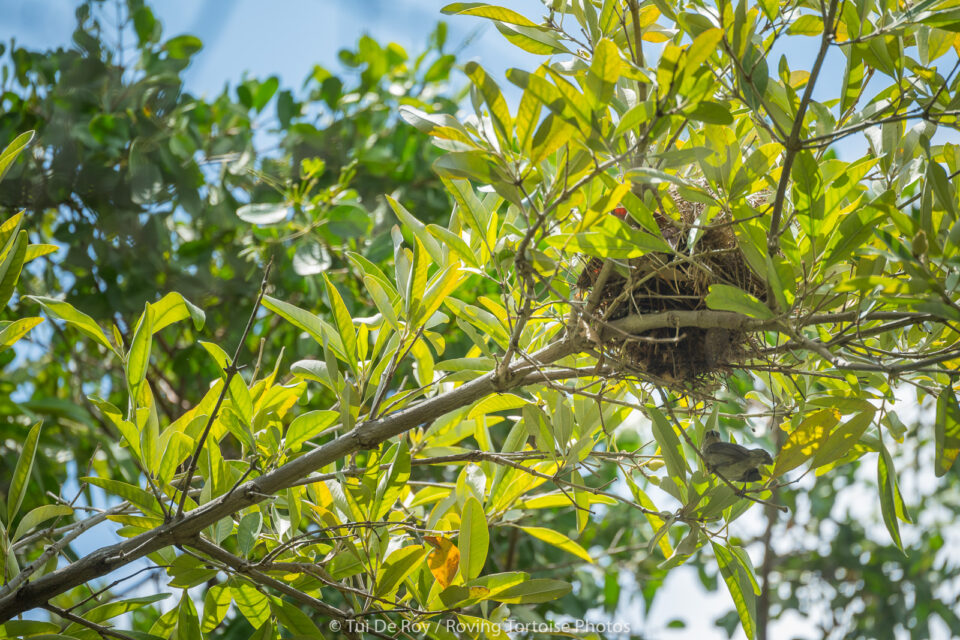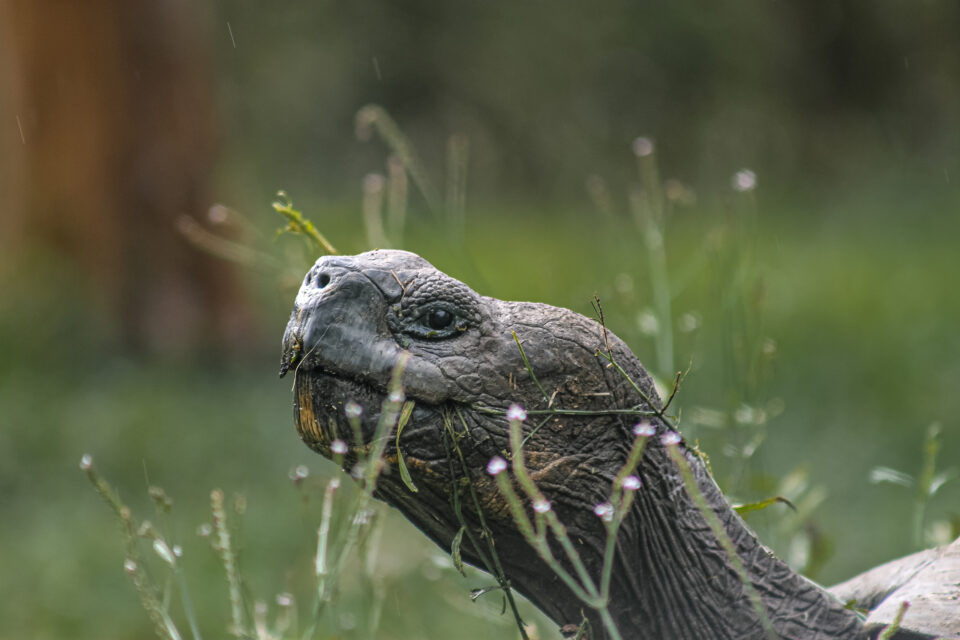

Eight Mangrove Finches Returned to the Wild
The team of experts are working to prevent the most critically endangered of ‘Darwin’s Finches’ from becoming extinct by collecting eggs from wild nests and raising them in captivity.
The mangrove finch is one of the rarest birds in the world, with a population of just 80 in the wild. The ambitious Mangrove Finch Project was initiated in 2014 with the aim of restoring the mangrove finch population. The team of experts are working to prevent the most critically endangered of ‘Darwin’s Finches’ from becoming extinct by collecting eggs from wild nests and raising them in captivity. The highlight of this year has been the releasing and monitoring of eight finches raised in captivity at the Charles Darwin Research Station.
The fledgling mangrove finches arrived on Isabela Island and were released into a purpose-built aviary within the mangrove forest, where they spent three weeks adapting to their new habitat. They were provided with various natural food sources and a natural environment. They were also fitted with a small transmitter at the base of their tail feathers to enable the team to monitor the birds after their release. These individuals were able to be identified by the coloured bands placed around their legs.
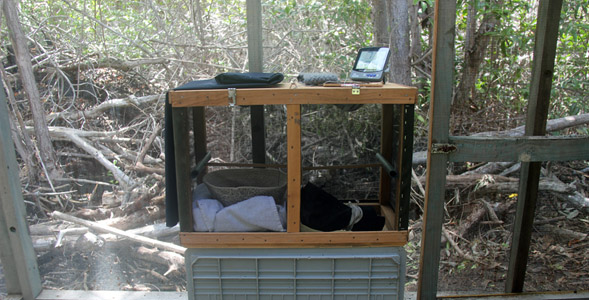
After three weeks of habituation, the doors of the aviary were opened. The mangrove finches were then free to come and go as they pleased. The team continued to leave food inside the aviary for the finches that returned. Each day, the number of visits to the aviary by the finches was recorded, and each time fewer returned and would spend less time inside. The post-release monitoring using the transmitter showed that the most of the juvenile birds had dispersed to the north towards Caleta Black and towards the arid zone in the south on the east side of Darwin Volcano and Tagus Cove.

Leader of the project, Francesca Cunninghame, said:
“Releasing eight mangrove finches raised in captivity and monitoring how they adapt to their natural habitat is incredibly satisfying. Unfortunately, 2015 was much more complicated in comparison to the first year of the project in 2014. We have released fewer finches than we had hoped. Nevertheless, to return eight young birds to the wild once no longer at risk from Philornis downsi is a significant boost to the young population and from previous research we know that none of them would have survived if left in the wild. Each step of the process is carried out in collaboration with our partners and we hope that through the repetition and refinement of our techniques developed up to now, we will be able to guarantee the long-term conservation of this critically endangered species”.
The completion of releasing and monitoring marks the success of the rearing program that began in February of this year (2015). The results are positive for the population of mangrove finches, however there is much more to be done. We continue fighting to prevent the extinction of this unique species.
The Mangrove Finch Project is a bi-institutional project carried out by the Charles Darwin Foundation and Galapagos National Park Directorate in collaboration with San Diego Zoo Global and Durrell Wildlife Conservation Trust. The project is supported by the Galapagos Conservation Trust, The Mohamed bin Zayed Species Conservation Fund, Durrell Wildlife Conservation Trust, The Leona M and Harry B Helmsley Charitable Trust, Galapagos Conservancy, and the British Embassy in Ecuador.
For more information on the Mangrove Finch Project , please visit our mangrove finch project page.
Related articles

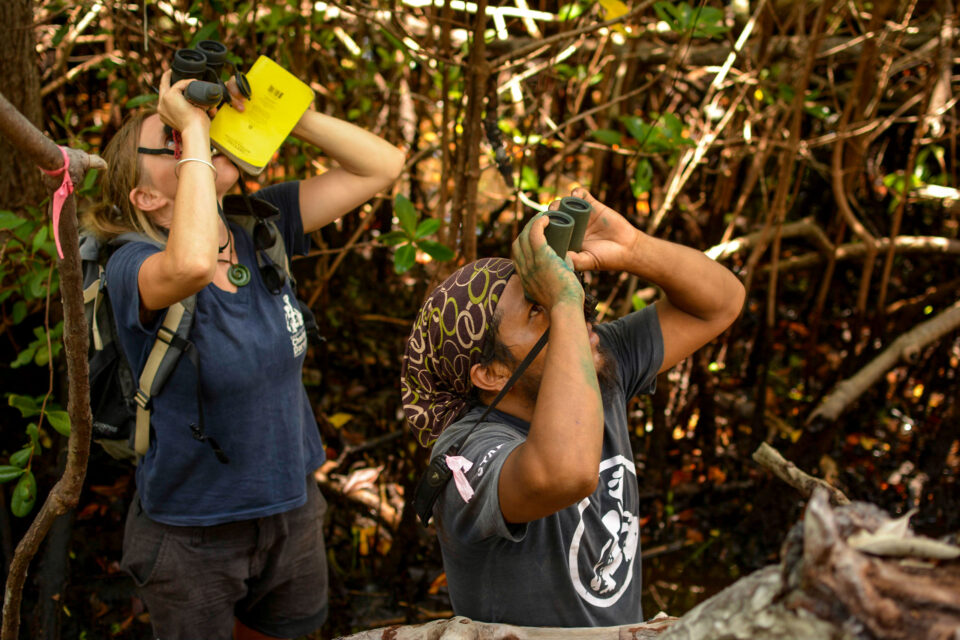
Mangrove Finch Project update
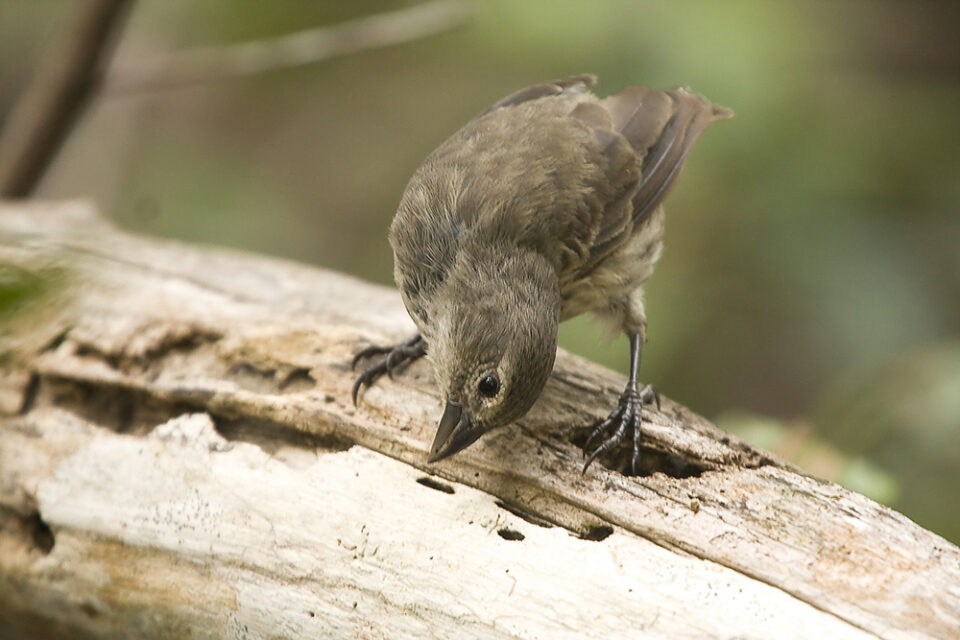
Mangrove Finch Project update
